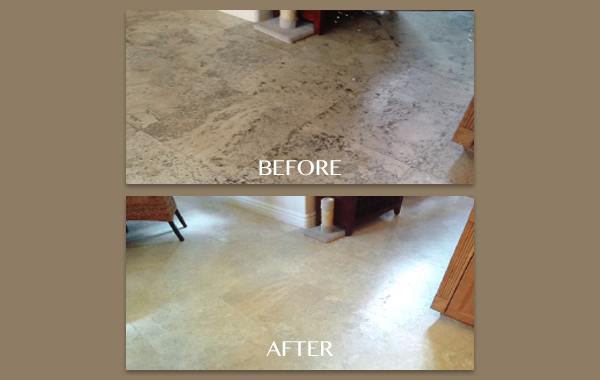

Hone, Clean, and Fill Holes
Pits in Travertine
When this travertine floor was first installed, the homeowners were unaware of a moisture problem. Since then, the floor became full of holes (also called “pits” or “voids”), distorting the overall appearance of the floor.
The homeowners thought that the floor would need to be replaced. Thankfully, they called Set In Stone first, to see if there was any hope for their travertine floor.
The BEFORE images show the condition of the floor when we first arrived. Notice how dirty the floor appears. Sweeping and mopping were no match for the holes in the travertine. This floor definitely needed our professional travertine restoration services.
How we rescued this floor
Travertine floor honing was the first step in the restoration process. As we honed the stone, much of the surface damage disappeared, and the brand new floor underneath was gradually revealed.
Then, we cleaned the floor to prepare it for the next step, what is known as traverfill or floating. Basically, this means we filled in the holes with epoxy tinted to match the surrounding floor.
As you can see in the AFTER images, the floor looks brand new. After our restoration process, it looked much cleaner, with an elegant appearance and a smooth texture. The homeowners were very pleased with the results, as were we.
For more information about travertine restoration, such as etch removal, lippage removal (leveling uneven tiles), crack and chip repair, stain removal, sealing, filling naturally-occurring travertine holes, as well as honed, slightly polished, or high-gloss polished finish, watch one or more of these short videos: Floating Travertine, Travertine Strip, Hone, and Repolish, and Travertine Repair, Restoration, and Polishing or visit our Travertine Services page.



